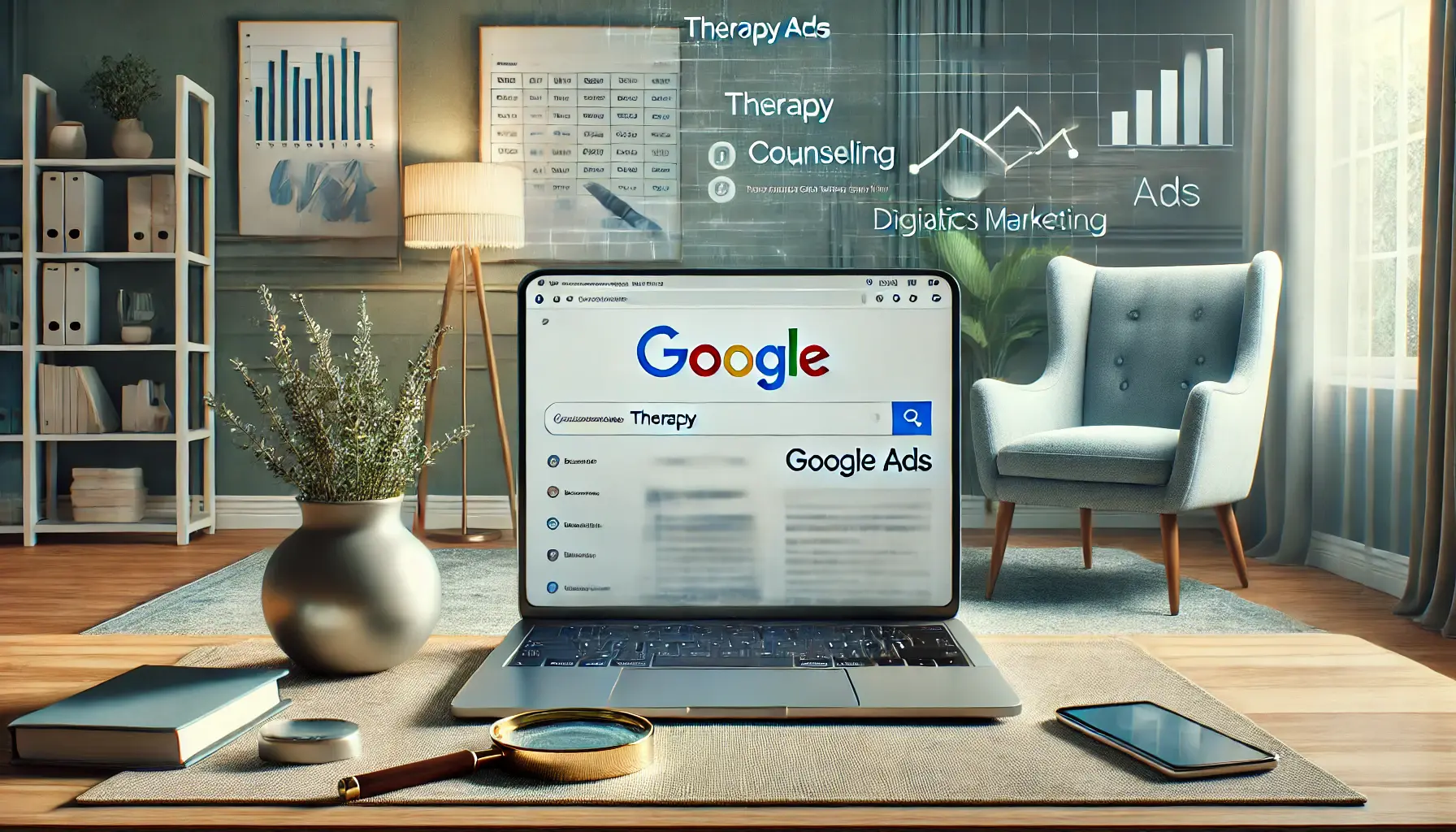In today’s competitive digital world, therapists face unique challenges when it comes to reaching potential clients.
Traditional methods of marketing services might not work effectively to connect with people in need of therapy.
This is where Google Ads becomes a vital tool for therapists.
With online advertising, therapists can not only reach more people but also connect with those actively searching for therapy services.
In this article, we’ll explore why Google Ads is crucial for therapists and how to maximize its potential to grow your practice.
- Why Google Ads Are Essential for Therapists
- Creating Effective Google Ads Campaigns for Therapists
- Budgeting Strategies for Therapists Using Google Ads
- Optimizing Google Ads Campaigns for Therapists
- Overcoming Common Challenges in Google Ads for Therapists
- Key Takeaways for Therapists Using Google Ads
- Frequently Asked Questions About Google Ads for Therapists
Why Google Ads Are Essential for Therapists
As a therapist, your primary goal is to provide care and support to your clients.
However, finding those clients in a saturated market can be difficult.
Google Ads offers a streamlined way to reach your target audience by placing your services directly in front of people actively searching for therapy solutions.
Here’s why Google Ads is an indispensable tool for therapists:

The evolution of therapy marketing from traditional methods to digital strategies.
Understanding the Digital Shift in Therapy Marketing
The way people search for therapy services has changed dramatically over the years.
Gone are the days when individuals relied solely on referrals or printed directories.
Now, most people turn to Google to find therapists in their area.
By appearing at the top of search results, you can ensure your services are visible to those who need them the most.
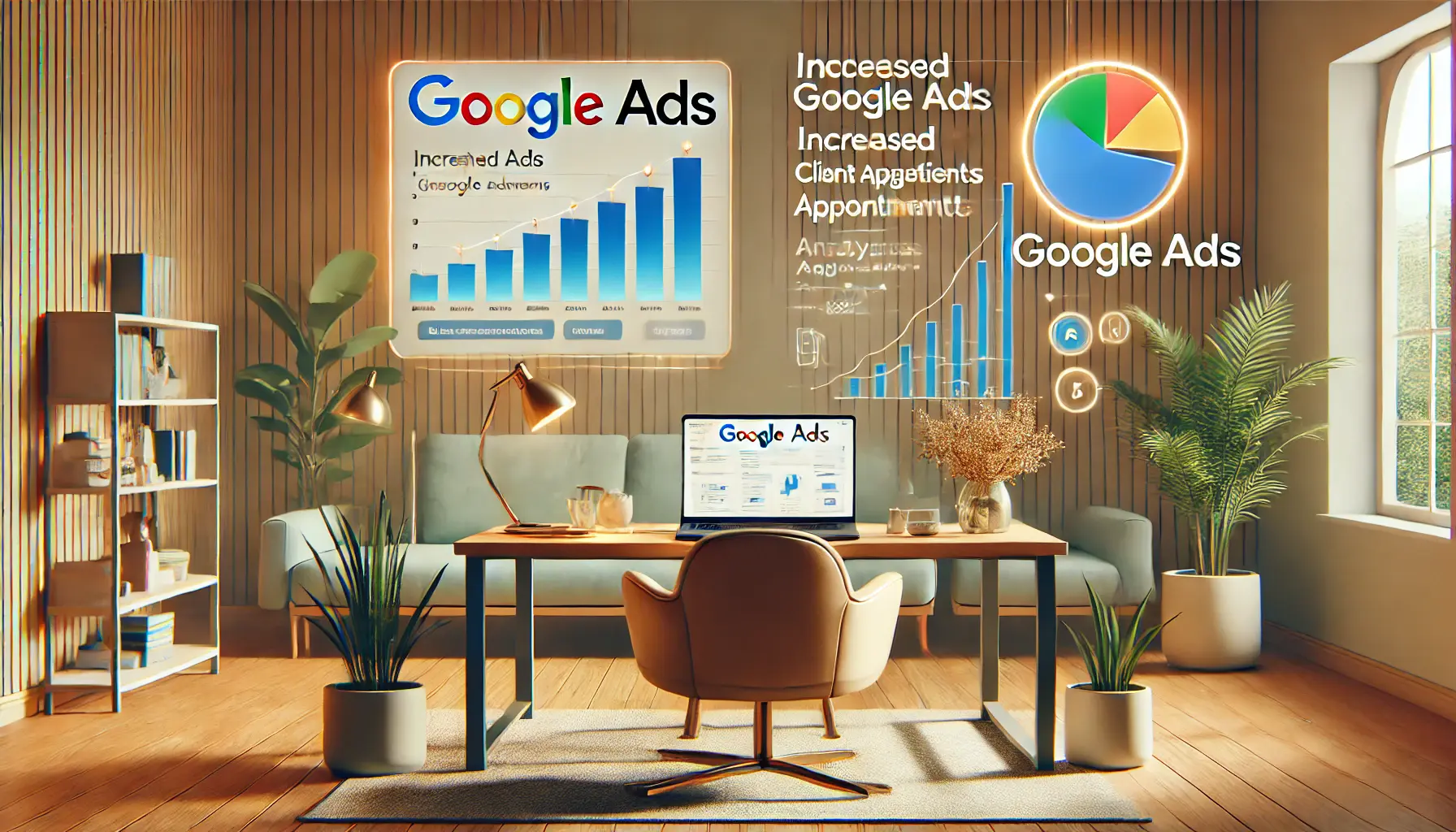
Highlighting the effectiveness of Google Ads in enhancing client reach for therapists.
Benefits of Google Ads for Therapists
Google Ads allows therapists to target specific demographicsStatistical data relating to the population and particular groups within it., ensuring their advertising budget is spent wisely.
You can narrow your audience by location, age, gender, and even specific search terms related to therapy.
Additionally, Google Ads provides measurable results, helping you track the success of your campaigns and make data-driven decisions.
- Immediate Visibility: With Google Ads, your practice can appear at the top of search results instantly, increasing your chances of being seen by potential clients.
- Cost-Effective Advertising: You only pay for clicks, ensuring you get value for your investment.
- Flexible Budgeting: Set daily or monthly budgets to control spending.
- Data Insights: Access detailed analytics to understand your audience and improve your campaigns.

undefined
Reaching the Right Audience with Google Ads
One of the greatest advantages of Google Ads is its ability to connect therapists with the right audience.
By using targeted keywords like “therapists near me” or “online therapy,” you can ensure your ads appear to individuals actively seeking your services.
Moreover, Google Ads allows you to refine your campaigns over time, optimizing performance and improving results.

Creating a trustworthy online presence to attract therapy clients.
Building Trust Through Online Presence
A strong online presence helps establish trust with potential clients.
Coupled with professional landing pages offering valuable information about your services, your Google Ads can encourage clients to choose you over competitors.
Adding testimonials and clear calls-to-action on the landing page will further enhance your credibility and trustworthiness.
Google Ads enables therapists to connect with clients who are actively searching for therapy services, making it a crucial tool in modern therapy marketing.
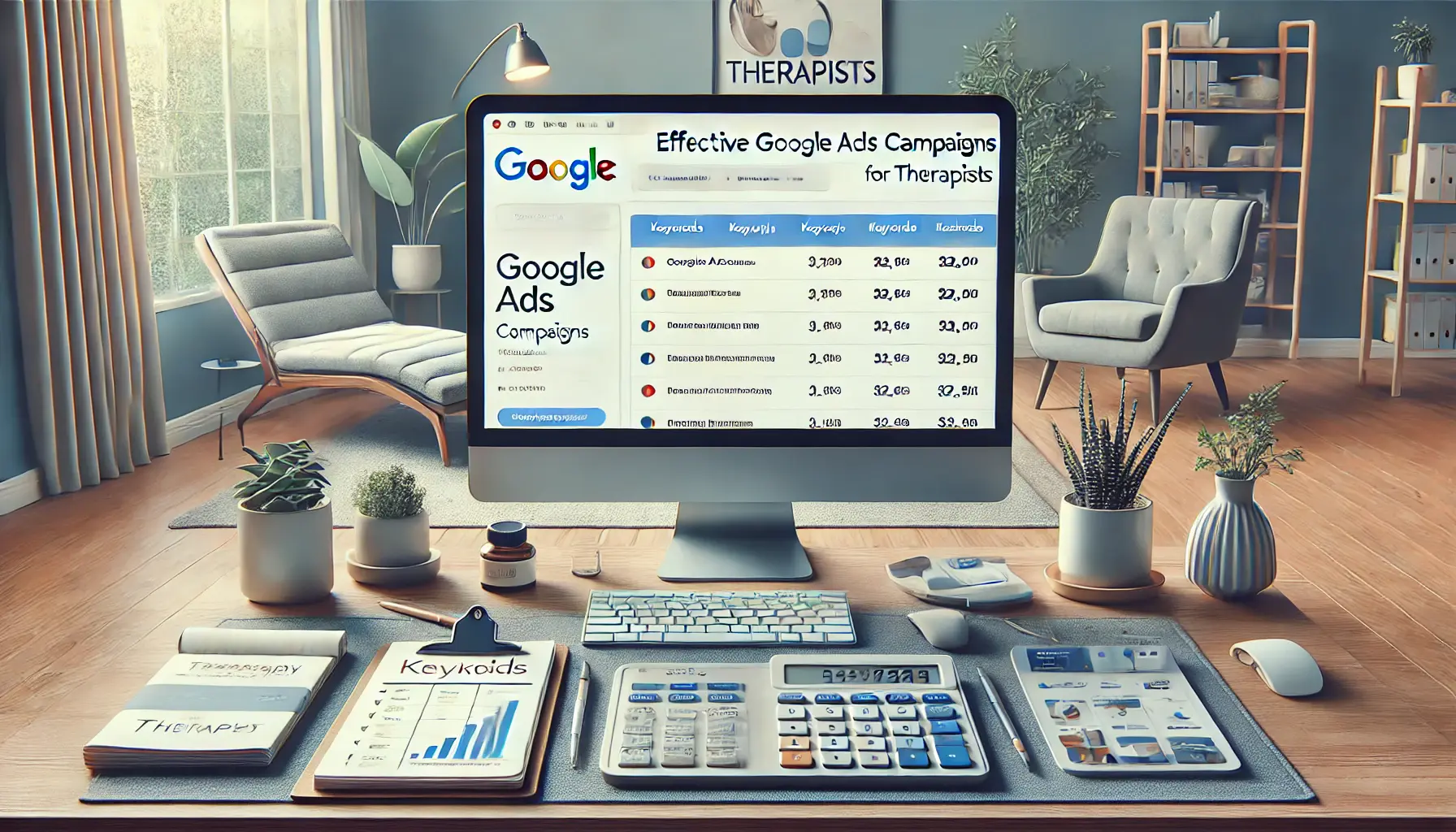
Designing impactful Google Ads campaigns tailored for therapists.
Creating Effective Google Ads Campaigns for Therapists
Developing a successful Google Ads campaign is essential for therapists looking to connect with potential clients.
By focusing on strategic keyword selection, compelling ad copy, precise location targeting, and utilizing ad extensions, you can enhance your online presence and attract the right audience to your therapy services.

Strategic keyword selection for targeted therapy marketing.
Choosing the Right Keywords for Therapy Services
Identifying and selecting appropriate keywords is the foundation of an effective Google Ads campaign.
Consider the following strategies:
- Utilize Specific and Relevant Keywords: Focus on terms that potential clients are likely to search for, such as “CBT therapist,” “depression therapist,” “counselor near me,” “anxiety treatment,” and “online therapist.”
- Employ Long-Tail Keywords: Target more specific phrases like “therapy for OCD in Manhattan” to reach a more precise audience.
- Use Negative Keywords: Exclude terms that are not relevant to your services to prevent your ads from appearing in unrelated searches.
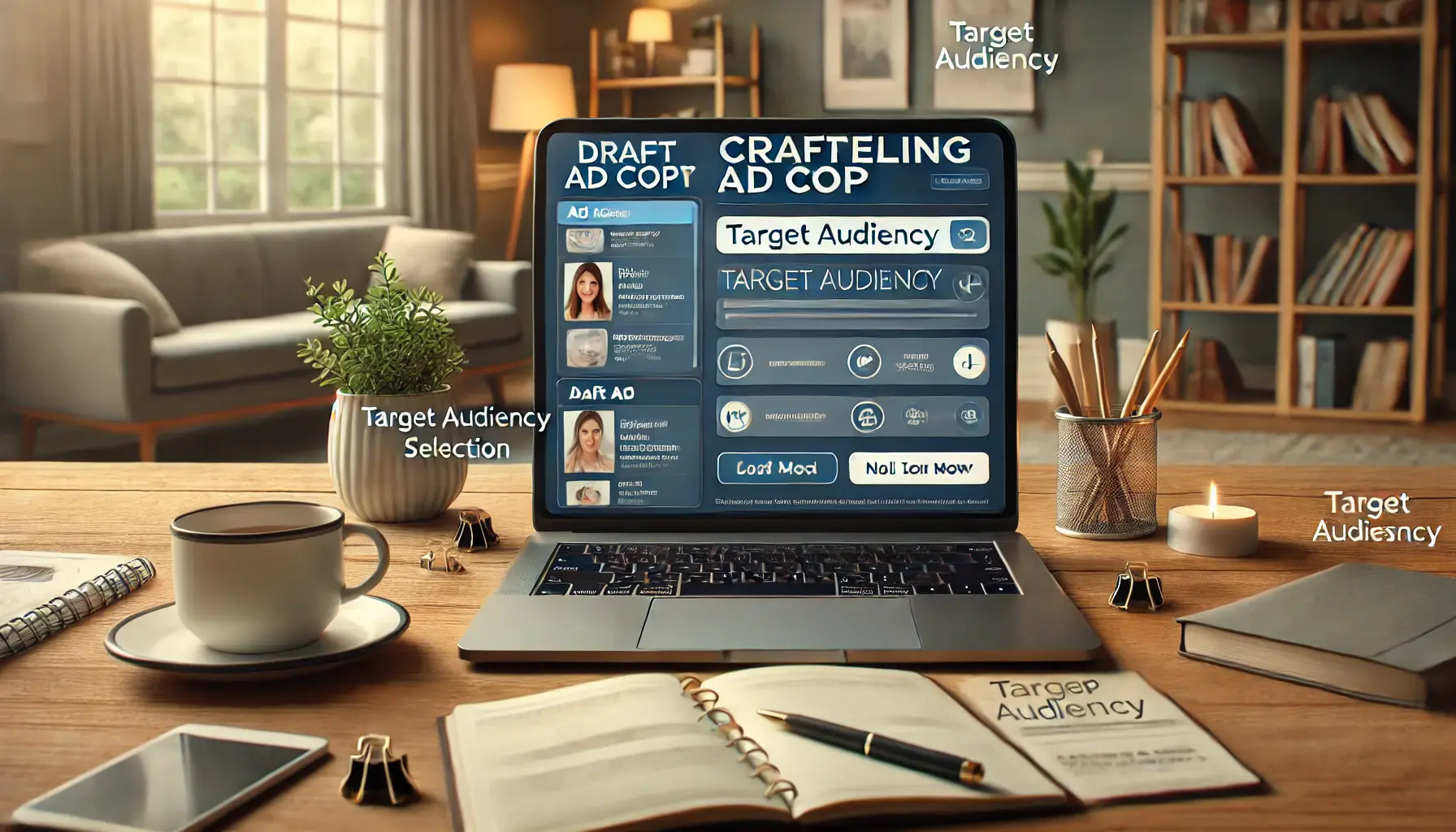
Designing persuasive ad copy to engage potential therapy clients.
Crafting Compelling Ad Copy to Attract Clients
Your ad copy should resonate with potential clients and encourage them to engage with your services.
Consider the following tips:
- Highlight Unique Selling Points: Emphasize what sets your practice apart, such as free consultations, sliding scale rates, immediate availability, insurance options, or telehealth services.
- Include a Strong Call-to-Action (CTA): Encourage immediate action with phrases like “Call Today for a Free Consultation” or “Start Your Journey to Healing Now.”
- Incorporate Relevant Keywords: Ensure your ad copy includes the keywords you are targeting to improve ad relevancy and quality scores.

Precision targeting with location-based strategies for therapy services.
Setting Up Location-Based Targeting for Therapists
Effective location targeting ensures your ads reach potential clients within your service area.
Implement the following strategies:
- Define Your Geographic Area: Target specific cities, regions, or states where you offer services to ensure your ads are shown to relevant audiences.
- Adjust Bidding Based on Location Performance: Monitor which locations yield the best results and allocate more budget to high-performing areas.
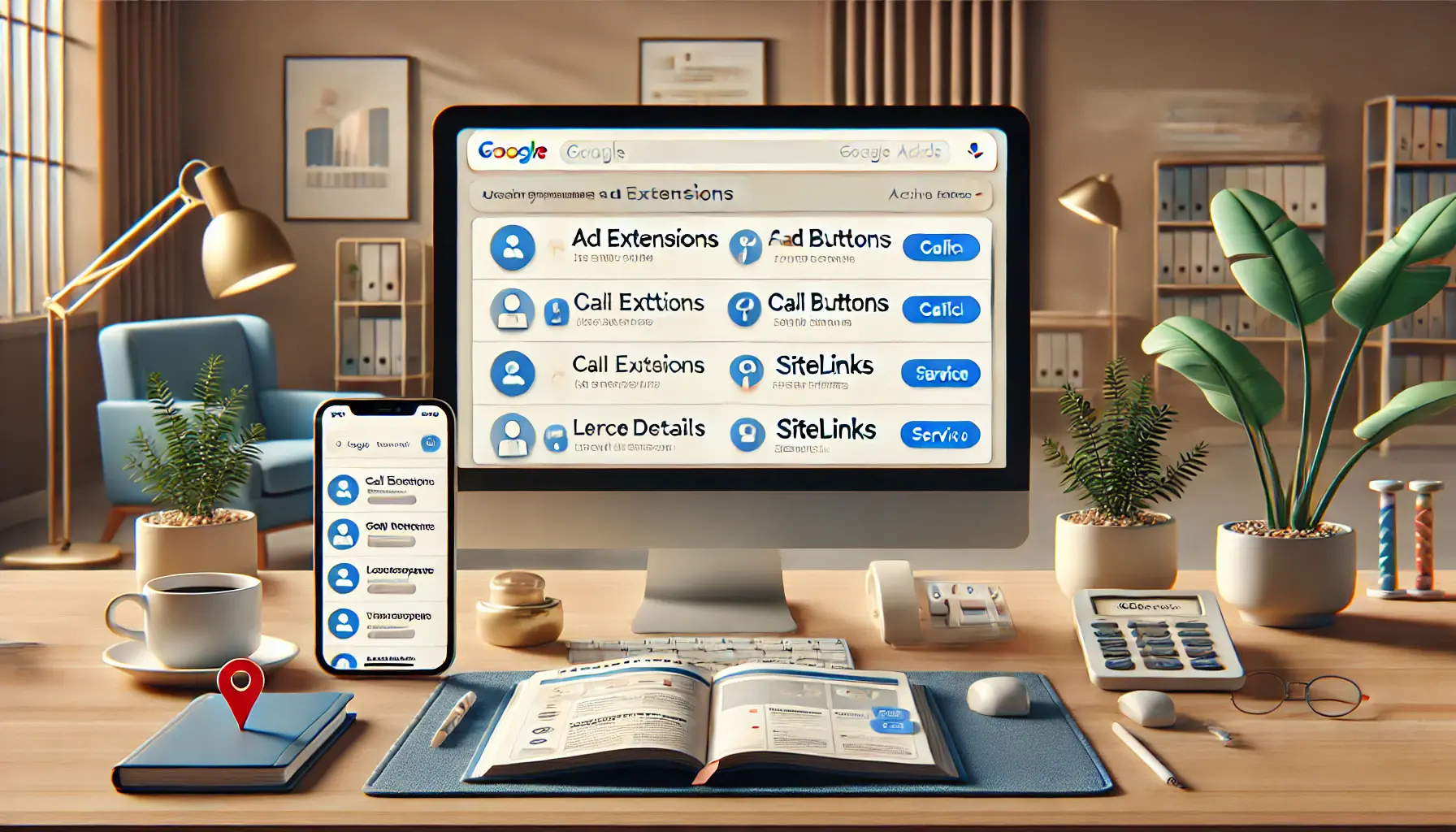
Maximizing ad performance with key service highlights through ad extensions.
Using Ad Extensions to Highlight Key Services
Ad extensions enhance your ads by providing additional information and increasing visibility.
Utilize the following extensions:
- Sitelink Extensions: Direct users to specific pages on your website, such as services offered, about us, or contact information.
- Call Extensions: Allow users to call your practice directly from the ad, facilitating immediate contact.
- Location Extensions: Display your practice’s address, making it easier for local clients to find you.
By carefully choosing keywords, writing captivating ad copy, targeting the right locations, and using ad extensions, therapists can create effective Google Ads campaigns that capture and convert potential clients.
Focusing on strategic keyword selection, compelling ad copy, and precise targeting helps therapists maximize their Google Ads campaigns effectively.

Optimizing ad spend with effective budgeting strategies for therapists.
Budgeting Strategies for Therapists Using Google Ads
Effectively managing your budget is crucial when utilizing Google Ads to attract new clients to your therapy practice.
By setting a realistic budget, choosing appropriate bidding strategies, and continuously monitoring your return on investment (ROI), you can ensure that your advertising efforts are both cost-effective and impactful.

Finding the perfect budget balance for therapy-focused ad campaigns.
Determining the Ideal Budget for Therapy Ads
Establishing a suitable budget is the first step in launching a successful Google Ads campaign.
Consider the following approaches:
- Start with a Modest Daily Budget: Begin with a daily budget of approximately $20, which equates to about $600 per month. This allows you to test the effectiveness of your ads without a significant financial commitment.
- Assess Client Lifetime Value (LTV): Calculate the average revenue generated per client to determine a sustainable cost per acquisition (CPA). For instance, if a client typically attends nine sessions at $150 each, the LTV is $1,350. Allocating up to $200 to acquire such a client can yield a substantial return on investment.
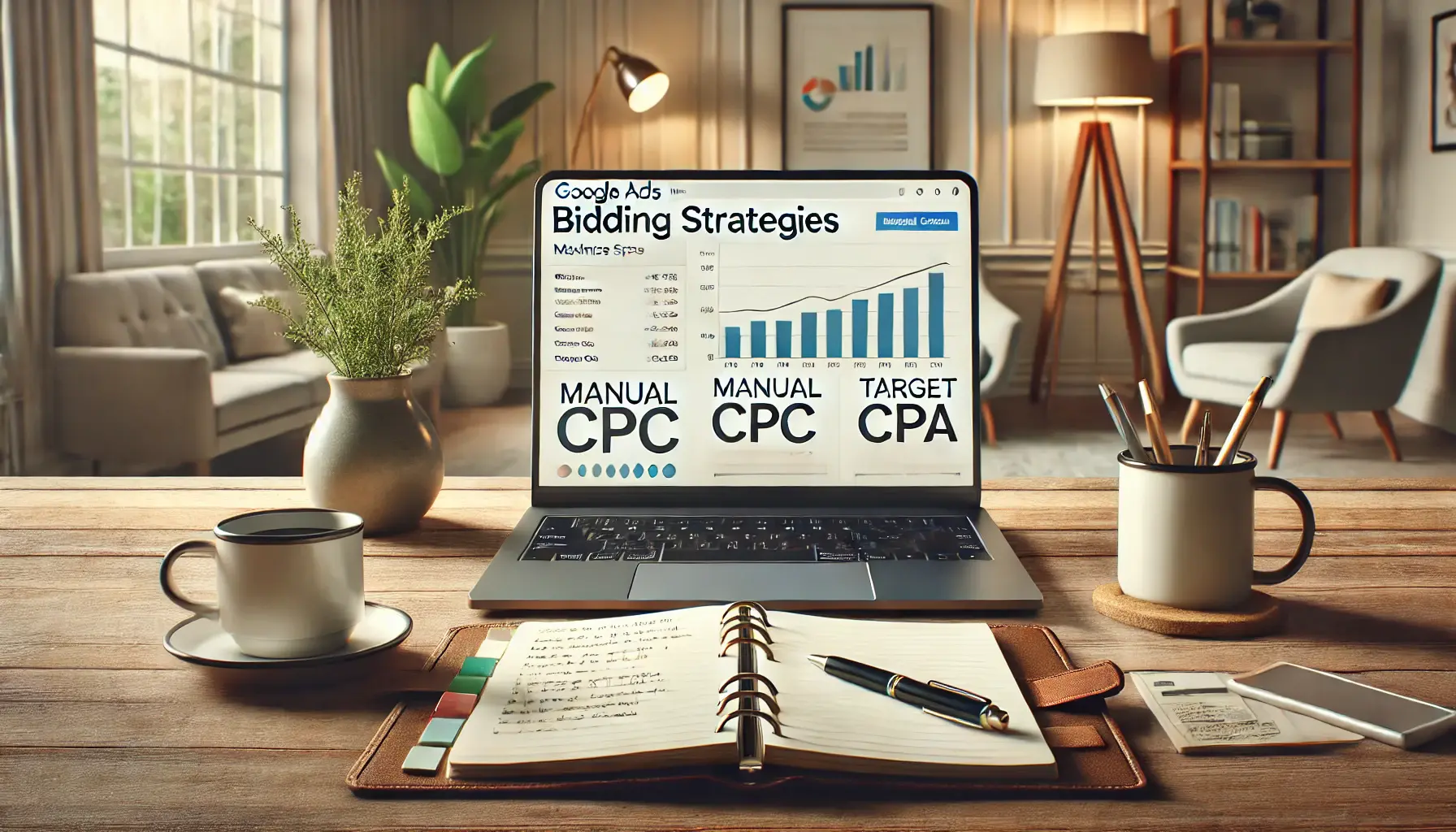
Optimizing ad spend with strategic bidding approaches for therapy services.
Bidding Strategies to Maximize Ad Spend
Selecting the right bidding strategy is essential to ensure your ads reach the intended audience without overspending.
Consider the following options:
- Manual CPC Bidding: Set a maximum cost-per-click (CPC) bid to control how much you spend. This strategy is effective if you have the experience and time to actively manage bids.
- Automated Bidding Strategies: Google offers automated options like Maximize Conversions or Target CPA. These strategies automatically adjust bids based on how likely it is that a click will convert, simplifying management and optimizing performance.
Analyzing the success of Google Ads campaigns through ROI tracking.
Tracking ROI on Google Ads Campaigns
Monitoring the performance of your ads is vital to ensure your investment translates into client acquisition.
Implement the following practices:
- Set Up Conversion Tracking: Utilize Google Ads’ conversion tracking tools to monitor actions such as appointment bookings or contact form submissions. This provides insight into which ads are most effective.
- Analyze Cost Per Conversion: Regularly review the amount spent to acquire each client and compare it to the client’s LTV to assess profitability.
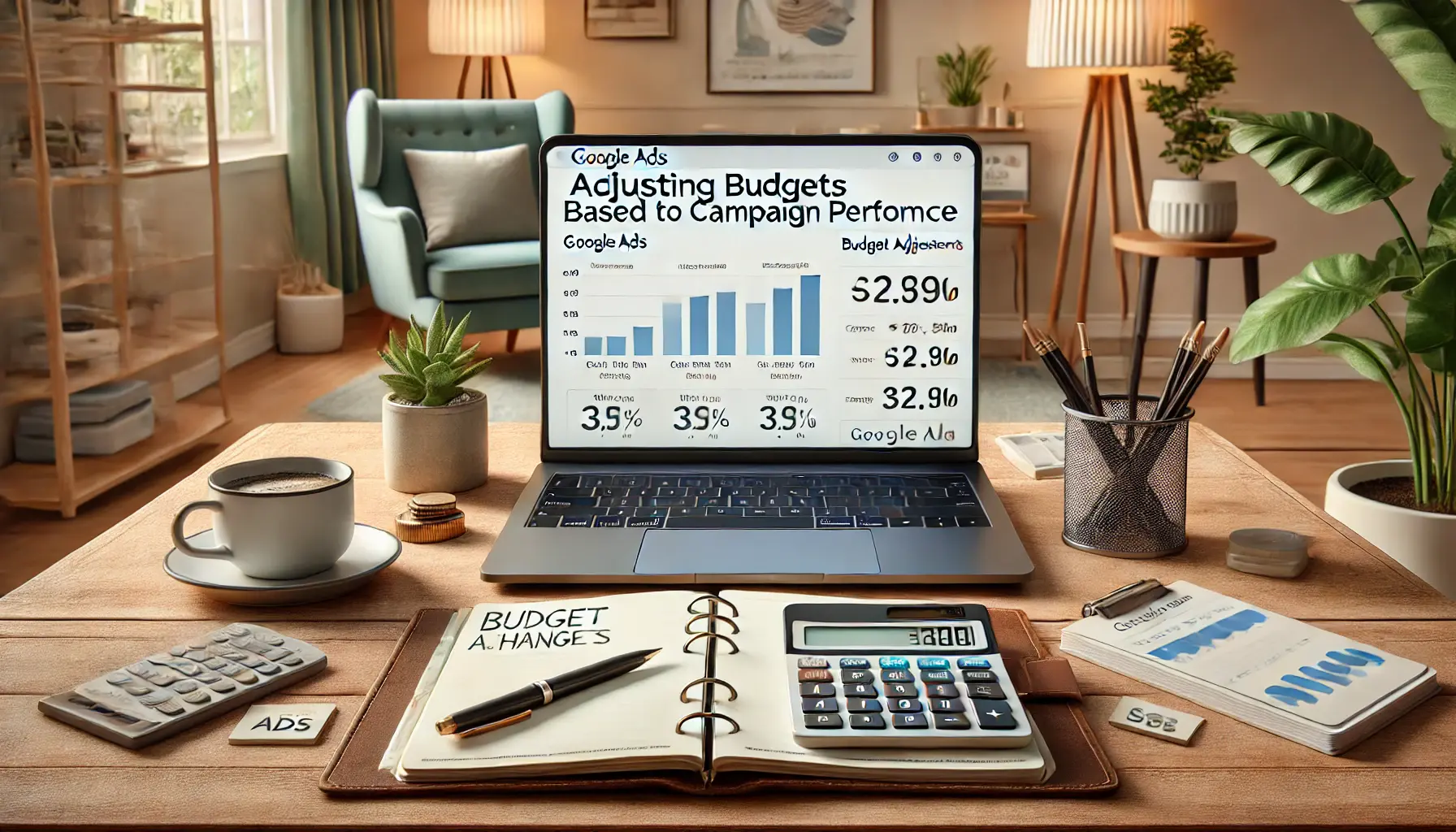
Optimizing ad budgets based on campaign performance for better results.
Adjusting Budgets Based on Campaign Performance
Continuous optimization of your budget ensures that funds are allocated effectively.
Consider the following steps:
- Identify High-Performing Campaigns: Allocate more budget to campaigns or keywords that yield a higher conversion rate, enhancing overall ROI.
- Pause Underperforming Ads: Temporarily halt ads or keywords that do not generate desired results, allowing resources to be reallocated to more successful areas.
By implementing these budgeting strategies, therapists can effectively manage their Google Ads campaigns, ensuring that advertising expenditures lead to meaningful client engagement and practice growth.
Starting with a modest budget and optimizing based on ROI ensures that your campaigns remain cost-effective while driving meaningful results.
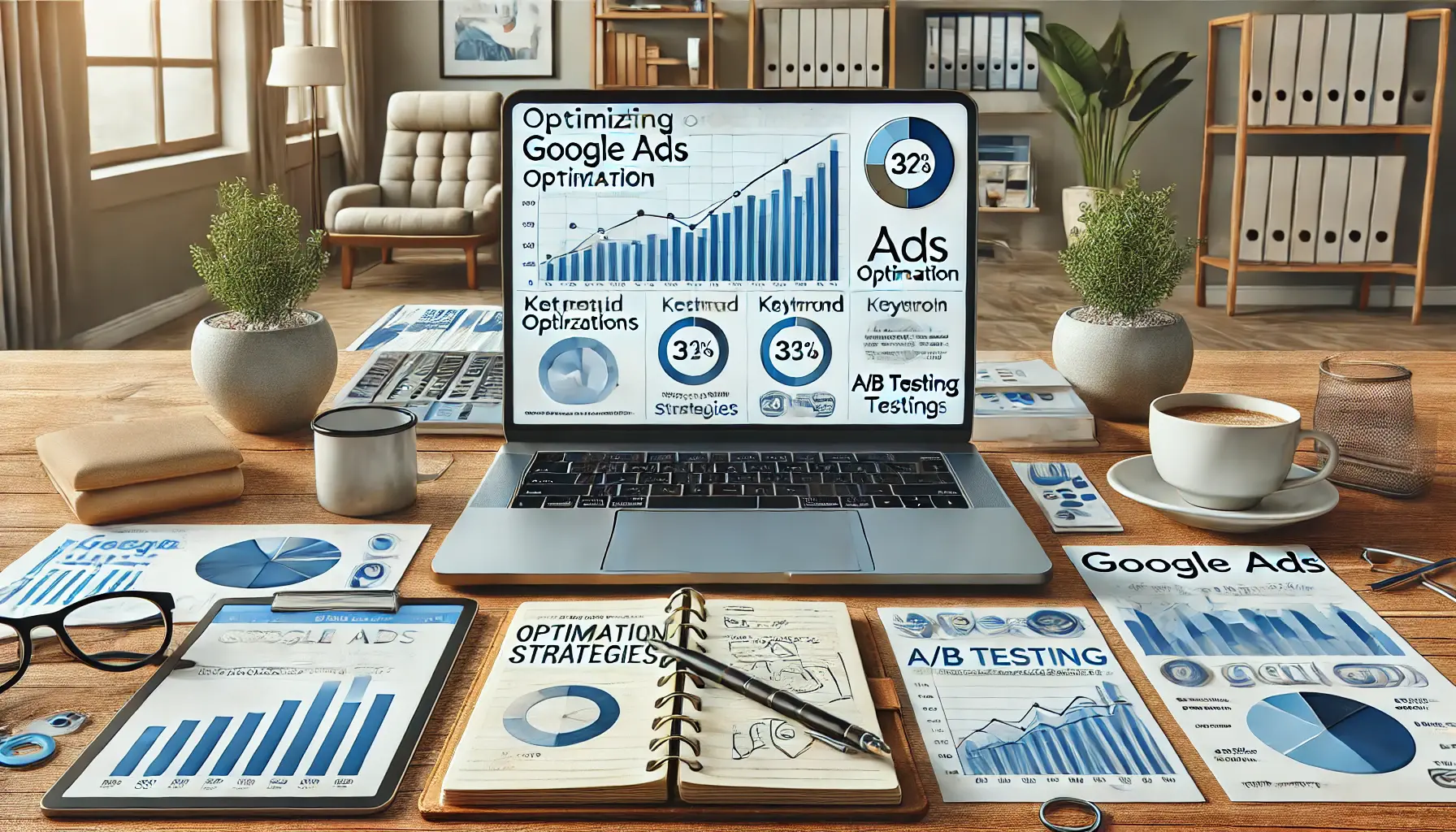
Enhancing therapy-focused ad campaigns with optimization strategies.
Optimizing Google Ads Campaigns for Therapists
Enhancing the performance of your Google Ads campaigns is essential for therapists aiming to connect effectively with potential clients.
By utilizing A/B testing, refining your keywords, and conducting performance analysis, you can ensure that your ads yield the best results.
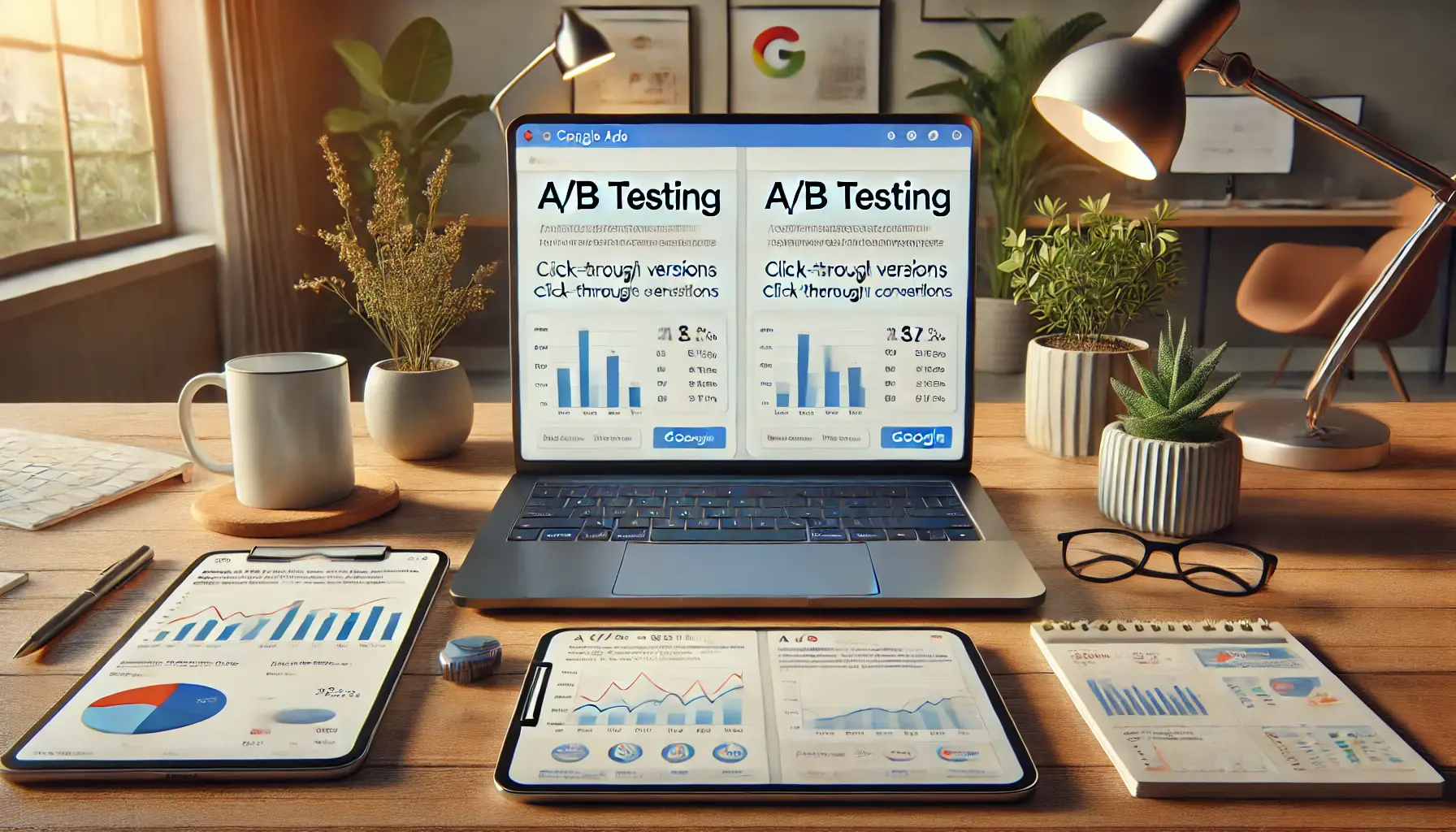
Refining ad campaigns through A/B testing for better results.
Tapping A/B Testing for Improvement in Ads
A/B testing involves running two variations of your ad to determine which one performs better.
This method allows you to make data-driven decisions to optimize your campaigns.
Consider the following:
- Testing Different Ad Elements: Experiment with various headlines, descriptions, and calls-to-action to identify the best-performing combinations.
- Running Simultaneous Tests: Conduct tests at the same time to maintain validity by avoiding external factors influencing results.
- Analyzing Results: Use Google Ads analytics tools to evaluate which ad version achieves higher click-through and conversion rates.

Improving ad performance through precise keyword refinement.
Refining Your Keywords for Better Targeting
Regularly updating and refining your keywords ensures that your ads reach the most relevant audience.
Implement these strategies:
- Identify High-Performing Keywords: Focus on terms that generate the most conversions and consider adding related keywords to expand reach.
- Utilize Negative Keywords: Exclude terms that are irrelevant to your services to prevent wasted ad spend.
- Monitor Trends: Stay informed about emerging search trends related to therapy to adjust your keyword strategy accordingly.

Leveraging data insights to optimize ad campaigns for therapists.
Analyzing Ad Performance and Making Data-Driven Decisions
Continuous analysis of your ad campaigns enables informed adjustments that enhance their effectiveness.
Follow these best practices:
- Review Key Metrics: Regularly track click-through rates, conversion rates, and cost per conversion to assess performance.
- Adjust Bids Based on Performance: Increase bids for high-performing keywords and reduce them for underperforming ones to optimize your budget.
- Refresh Ad Creative: Update ad copy to reflect what resonates best with your audience, increasing engagement and conversions.
By incorporating A/B testing, refining keywords, and continuously analyzing ad performance, therapists can fine-tune their Google Ads campaigns for optimal client acquisition and engagement.
Regular A/B testing and keyword refinement are essential for enhancing the performance and effectiveness of Google Ads campaigns.

Navigating and resolving challenges in Google Ads campaigns for therapists.
Overcoming Common Challenges in Google Ads for Therapists
While Google Ads offers therapists a powerful platform to reach potential clients, it comes with its own set of challenges.
Addressing these effectively can significantly enhance your campaign’s success.

Adhering to ethical standards in advertising for therapists.
Ensuring Ethical Compliance in Advertising
Therapists must adhere to ethical guidelines in their advertising efforts.
To maintain professionalism and trust:
- Maintain Client Confidentiality: Avoid sharing any client information or testimonials that could compromise privacy.
- Provide Accurate Representations: Ensure that all claims about your services are truthful and not misleading.
- Avoid Sensationalism: Steer clear of using fear-based tactics or exaggerated promises to attract clients.

Balancing competition and ad spending in digital marketing for therapists.
Managing Competition and Ad Costs
In a competitive market, standing out without overspending is crucial.
Consider the following strategies:
- Focus on Niche Specializations: Highlight specific areas of expertise to differentiate your practice from others.
- Optimize Ad Quality Scores: Create relevant and high-quality ads to improve your Quality Score, which can lead to lower costs per click.
- Implement Geotargeting: Concentrate your ads on specific geographic areas where your potential clients are located to maximize relevance and budget efficiency.

Resolving technical challenges in managing Google Ads campaigns for therapists.
Addressing Technical Challenges in Campaign Management
Managing the technical aspects of Google Ads can be daunting.
To navigate these challenges:
- Seek Professional Help: Consider hiring a digital marketing professional or agency experienced in healthcare advertising.
- Make Full Use of Google Support: Utilize Google’s tutorials, help centers, and community forums for assistance with your campaigns.
- Engage in Continuous Learning: Stay updated on new features and best practices for Google Ads through webinars and online courses.
By proactively addressing these challenges, therapists can optimize their Google Ads campaigns, ensuring greater reach and improved engagement with potential clients.
Ethical advertising and managing competition are critical to maintaining trust and achieving success in a competitive digital environment.
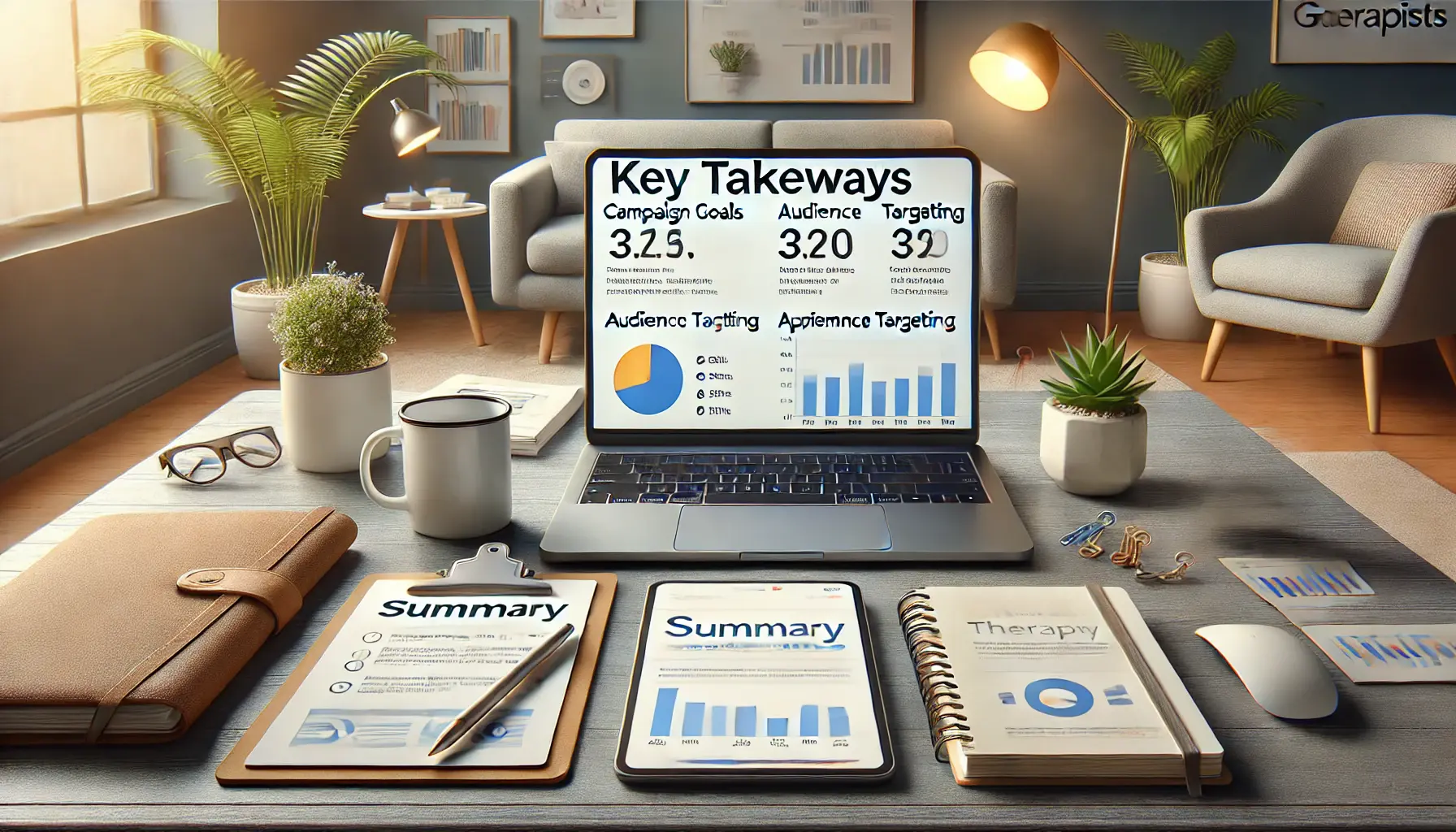
Important insights and strategies for therapists leveraging Google Ads.
Key Takeaways for Therapists Using Google Ads
Google Ads provides a powerful and effective platform for therapists to connect with potential clients, build trust, and grow their practice.
By leveraging this tool strategically, therapists can overcome challenges and achieve meaningful results.
Below is a summary of the key points discussed in this article:
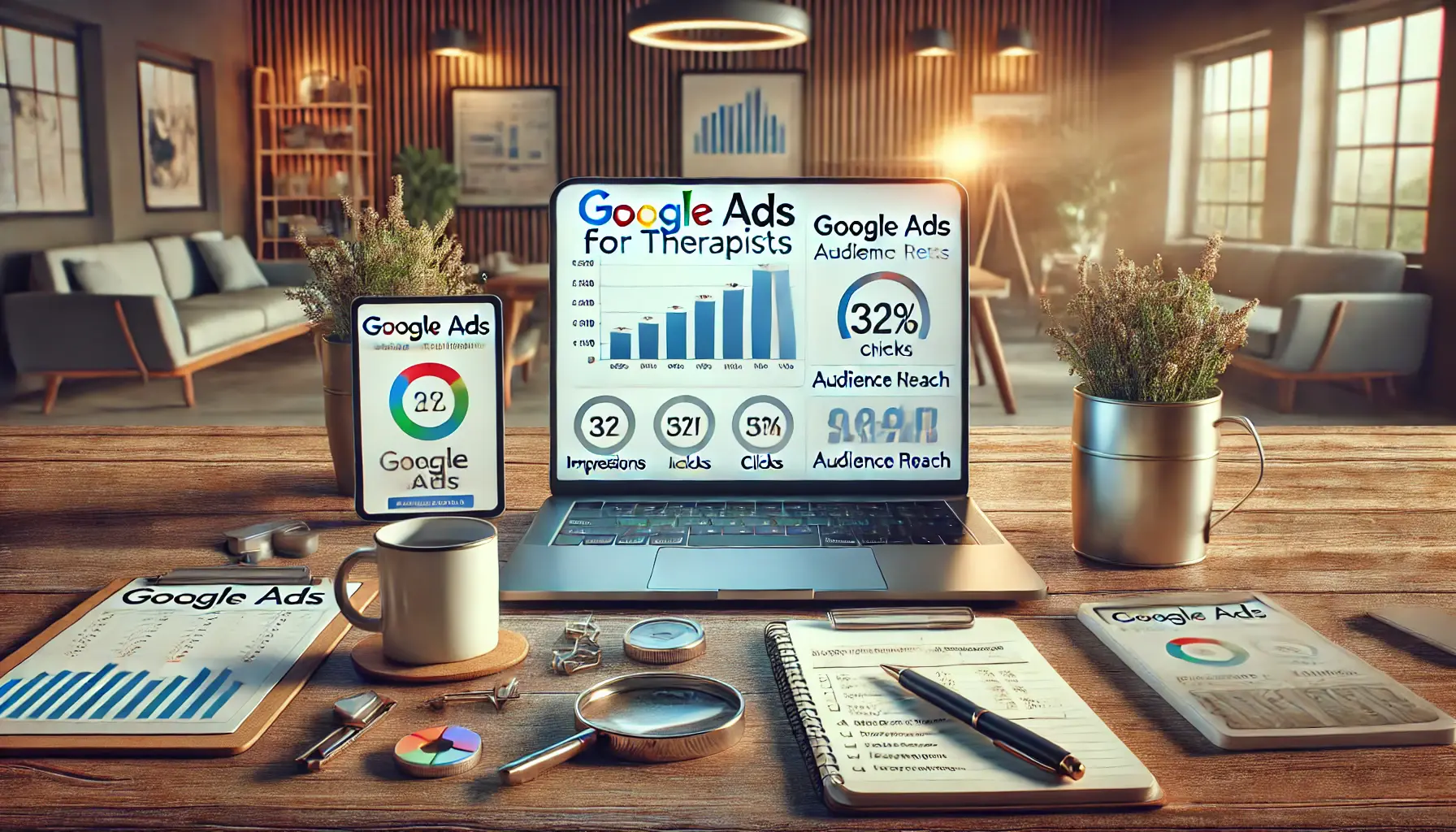
Highlighting the crucial role of Google Ads in therapy marketing.
The Importance of Google Ads for Therapists
Google Ads is critical for therapists aiming to locate potential clients in today’s digital age.
It offers immediate visibility and precise targeting capabilities, allowing therapists to connect with individuals actively searching for therapy services.
By integrating Google Ads into their marketing strategies, therapists can significantly enhance their reach and engagement.

A structured approach to building effective Google Ads campaigns for therapists.
Steps to Creating Successful Google Ads Campaigns
- Keyword Selection: Choose relevant and specific keywords to attract the right audience.
- Ad Copy: Craft compelling and truthful ad copy that resonates with potential clients.
- Targeting: Use geotargeting and demographic filters to optimize ad reach.
- Ad Extensions: Include additional information, such as links to key pages, contact details, and practice addresses, to improve click-through rates.
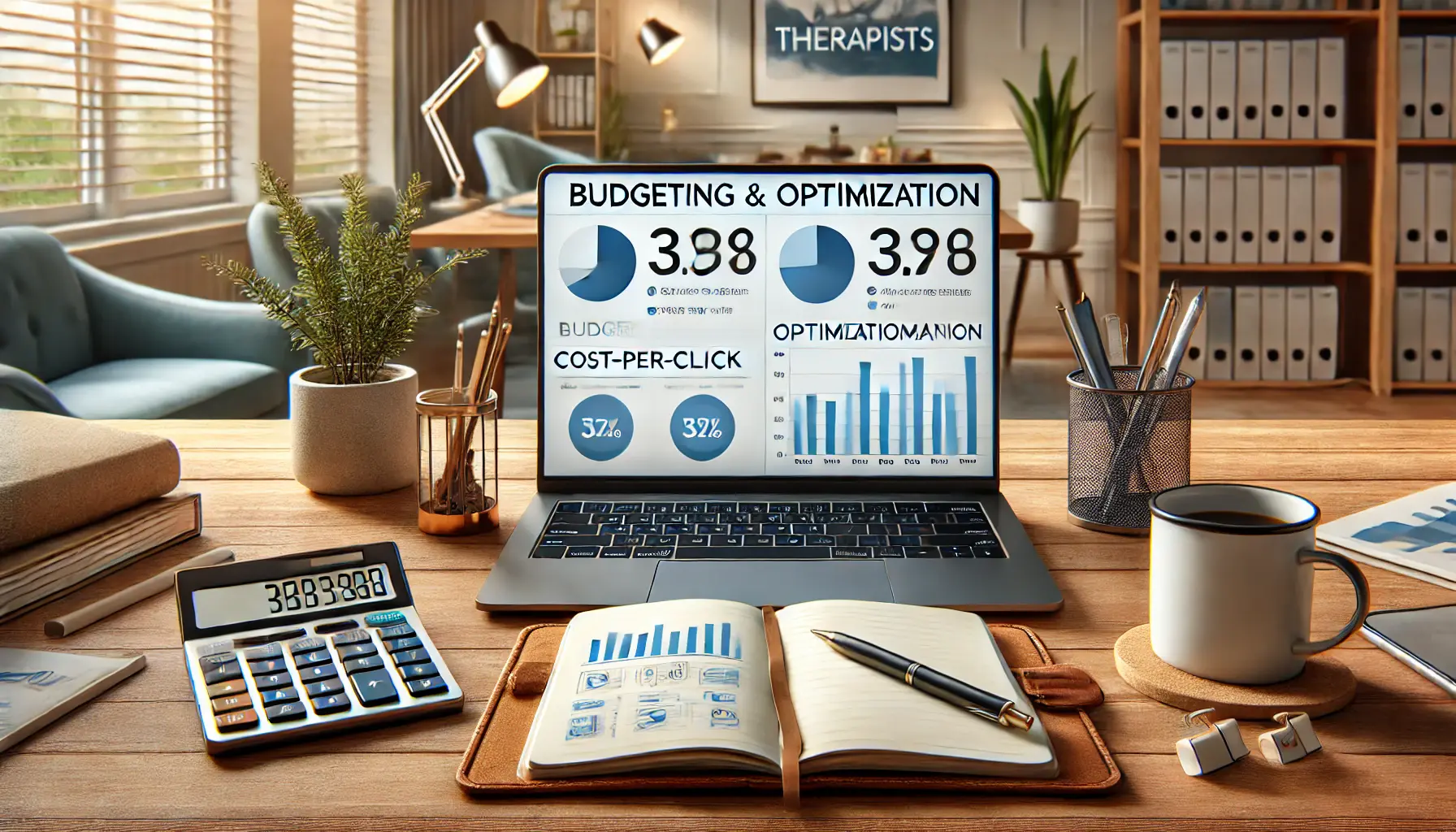
Strategizing budget and optimizing campaigns for better Google Ads performance.
Budgeting and Optimization
Managing your budget effectively is key to a successful campaign.
Start with a realistic daily budget, focus on high-performing keywords, and refine bidding strategies to maximize return on investment.
Regular analysis and adjustments ensure that your campaigns remain cost-effective while driving meaningful results.

Overcoming obstacles in Google Ads campaigns for therapists.
Addressing Common Challenges
- Ethical Advertising: Adhere to professional guidelines to maintain trust and credibility.
- Cost Management: Stand out in a competitive market by focusing on niche specializations and improving Quality Scores.
- Technical Expertise: Seek professional help or utilize Google’s support resources to overcome technical challenges in campaign management.
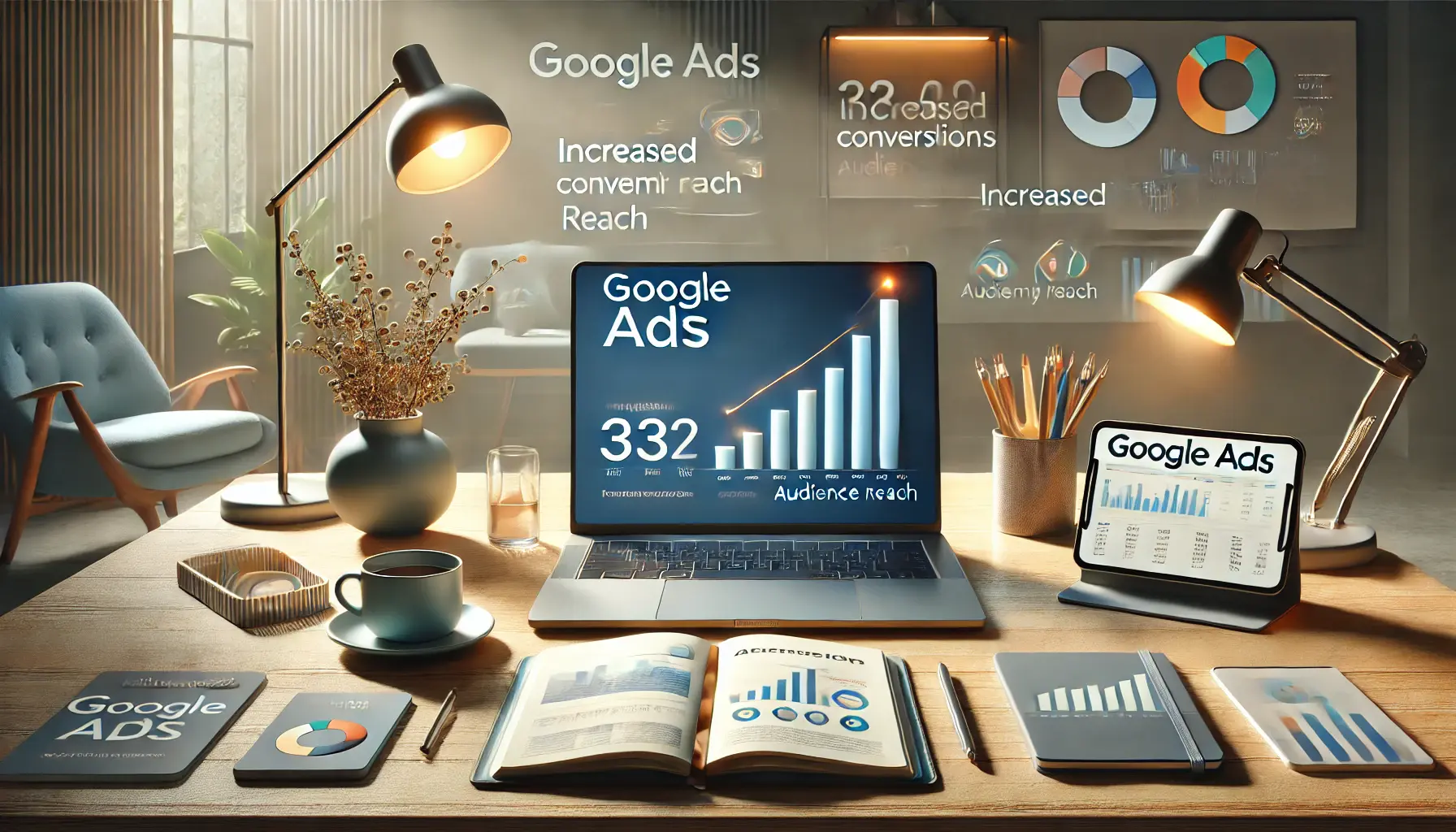
Reflecting on the success and insights gained from Google Ads campaigns.
Final Thoughts
By following the strategies outlined in this article, therapists can harness the full potential of Google Ads to connect with their ideal clients.
Whether through effective keyword usage, compelling ad copy, strategic budgeting, or overcoming common challenges, therapists have the tools to create impactful advertising campaigns.
Embracing these approaches ensures a stronger online presence, increased engagement, and sustainable growth for therapy practices.
Therapists should integrate strategic Google Ads practices to connect with clients, enhance visibility, and grow their practice sustainably.

undefined
Your campaigns can be managed by an agency specialized in Google Ads, check out our service page.
Frequently Asked Questions About Google Ads for Therapists
As therapists consider using Google Ads to grow their practice, a number of common questions arise.
Here are quick answers to some of the most frequently asked questions on this topic:
Yes, Google Ads can effectively attract clients by targeting individuals actively searching for therapy services, thereby increasing your practice’s visibility and client acquisition.
Starting with a daily budget of approximately $20, totaling around $600 per month, allows therapists to test and optimize their campaigns effectively.
Therapists should focus on specific and relevant keywords that potential clients are likely to search for, such as “CBT therapist” or “anxiety treatment.”
Therapists must ensure their advertising adheres to ethical guidelines, including maintaining client confidentiality and providing accurate representations of their services.
By setting up conversion trackingA method used in digital advertising to measure specific user actions, such as purchases or sign-ups., therapists can track conversions such as appointment bookings and understand how well their ads are performing.
It is not necessary, but with professional help or using the support provided by Google, therapists can overcome technical difficulties and optimize their campaigns.
Focusing on niche specializations and optimizing ad quality scores can help therapists stand out in a competitive market.
Yes, Google Ads allows therapists to target specific geographic locations, ensuring their ads reach potential clients within their service areas.
Utilizing sitelink, call, and location extensions can provide additional information and increase the visibility of therapy service ads.
